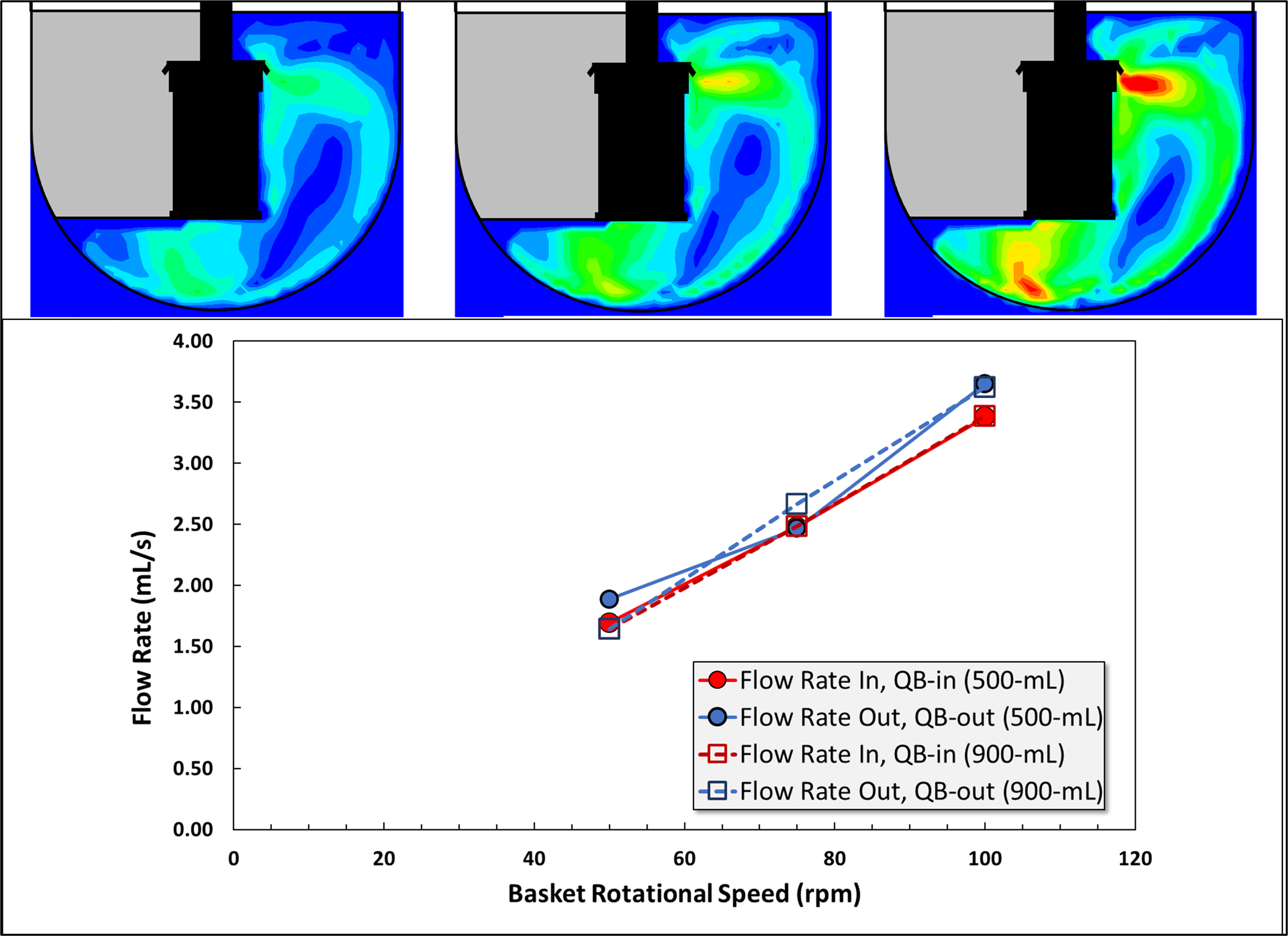2022 Annual Meeting
(406c) Hydrodynamics Investigation of the USP Dissolution Testing Apparatus 1 (Basket Apparatus) Filled with 500 Ml Media Volume Using Particle Image Velocimetry (PIV)
Authors
Chadakarn Sirasitthichoke - Presenter, New Jersey Institute of Technology
Piero Armenante, New Jersey Institute of Technology
Drug dissolution testing is an analytical tool used to assess the in vitro dissolution performance of pharmaceutical oral solid dosage forms. The USP Apparatus 1 (basket apparatus) is a common tool used for this purpose. Any changes in the system can impact the system hydrodynamics and cause variability of results, thus affecting product quality. The literature on the hydrodynamics is Apparatus 1 is quite limited. However, recently our group quantified the velocity distribution using standard basket 40-mesh size in a vessel filled with 900-mL (Sirasitthichoke et al., Intern. J. Pharmaceutics:X 3 (2021) 100078). No such studies exist on the hydrodynamics of dissolution vessels filled with 500 mL, which is a common alternative to the 900 mL case. Here, we experimentally generated detailed maps of the flow field in the standard USP Apparatus 1 for a liquid fill volume of 500 mL using Particle Image Velocimetry (PIV) for different basket rotational speeds. The flow field was dominated by the tangential velocity component while the magnitudes of the axial and radial velocity components varied with location but were always low. A nearly horizontal small jet was seen emanating radially near the top edge of the basket. Velocities typically scaled well with increasing rotational speed in most regions of the vessel except for a region directly below the basket. A comparison of these results with those for the 900 mL fill volume case showed that the flows through the baskets were similar in both systems. The velocity distributions were also found to be similar, except in the region above the basket, which was affected by the presence of a small radial jet with an orientation significantly different between the 500-mL and the 900-mL systems. We expect that these results will be of significant relevance to dissolution testing scientists and practitioners. Even more importantly, assuming that the dissolution process occurs under sink conditions in both cases and that the tablet does not immediately disintegrate but instead erodes slowly, our results imply that the amount of drug released in the dissolution media increases linearly with time. This in turn implies that the drug dissolved over time is independent of the liquid medium volume at least during the initial phase of the dissolution process when the tablet surface area does not change significantly.


